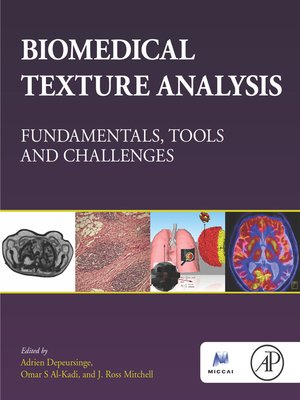Biomedical Texture Analysis
ebook ∣ Fundamentals, Tools and Challenges · The MICCAI Society book Series
By Adrien Depeursinge

Sign up to save your library
With an OverDrive account, you can save your favorite libraries for at-a-glance information about availability. Find out more about OverDrive accounts.
Find this title in Libby, the library reading app by OverDrive.



Search for a digital library with this title
Title found at these libraries:
| Library Name | Distance |
|---|---|
| Loading... |
Biomedical Texture Analysis: Fundamentals, Applications, Tools and Challenges describes the fundamentals and applications of biomedical texture analysis (BTA) for precision medicine. It defines what biomedical textures (BTs) are and why they require specific image analysis design approaches when compared to more classical computer vision applications.
The fundamental properties of BTs are given to highlight key aspects of texture operator design, providing a foundation for biomedical engineers to build the next generation of biomedical texture operators. Examples of novel texture operators are described and their ability to characterize BTs are demonstrated in a variety of applications in radiology and digital histopathology. Recent open-source software frameworks which enable the extraction, exploration and analysis of 2D and 3D texture-based imaging biomarkers are also presented.
This book provides a thorough background on texture analysis for graduate students and biomedical engineers from both industry and academia who have basic image processing knowledge. Medical doctors and biologists with no background in image processing will also find available methods and software tools for analyzing textures in medical images. - Defines biomedical texture precisely and describe how it is different from general texture information considered in computer vision
- Defines the general problem to translate 2D and 3D texture patterns from biomedical images to visually and biologically relevant measurements
- Describes, using intuitive concepts, how the most popular biomedical texture analysis approaches (e.g., gray-level matrices, fractals, wavelets, deep convolutional neural networks) work, what they have in common, and how they are different
- Identifies the strengths, weaknesses, and current challenges of existing methods including both handcrafted and learned representations, as well as deep learning. The goal is to establish foundations for building the next generation of biomedical texture operators
- Showcases applications where biomedical texture analysis has succeeded and failed
- Provides details on existing, freely available texture analysis software, helping experts in medicine or biology develop and test precise research hypothesis







